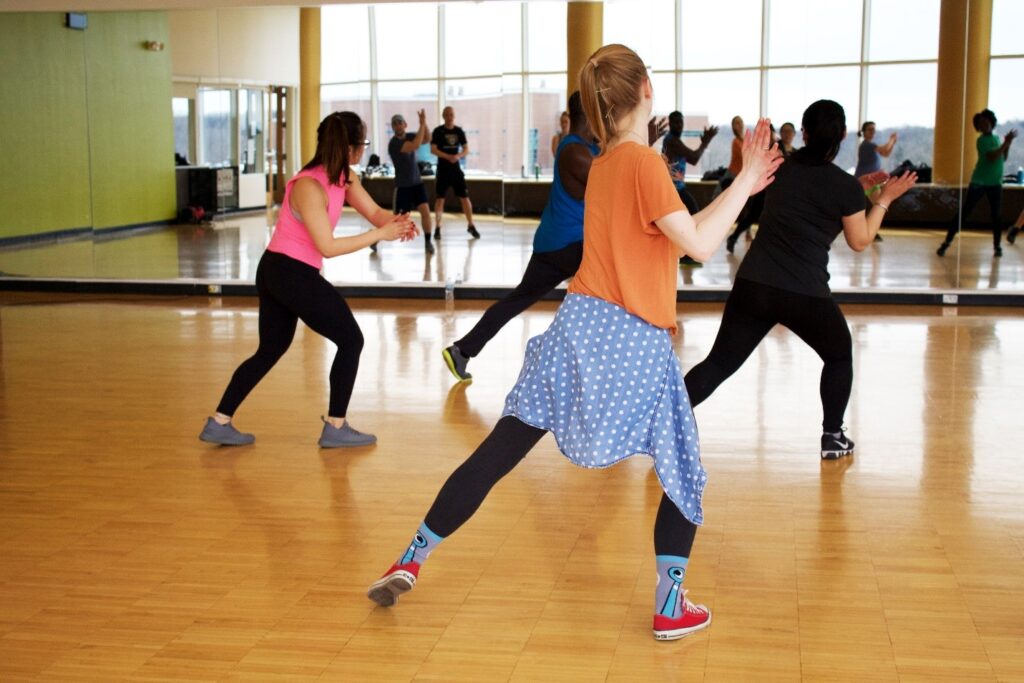Introduction
The term “aerobic” refers to the usage of oxygen to break down glucose and fat for energy. Aerobic exercise is a type of physical activity that strengthens your arms, legs, and hips while improving your general health. It also increases your stamina, allowing you to engage in any workout without being exhausted.
Aerobics is a beneficial workout that improves our health in various ways, including improving heart health, increasing blood flow to the body, and increasing muscle endurance, among others. Dance, biking, fitness walking, swimming, and jumping rope are some of the most popular aerobic workouts. In addition, aerobic exercise lowers the risk of certain illnesses, from heart problems to Alzheimer’s. Aerobic exercise is particularly beneficial since it forces the lungs and heart to work better than usual. Professionals recommend that individuals receive at least 16 0minutes of moderate aerobic exercise or 85 minutes of strenuous activity every week.
However, to discover the advantages Continue reading to discover more about the advantages of aerobic exercise and how to implement it into our daily routine.
1. Facilitates heart health
Most doctors advise persons with those at risk of heart disease to engage in aerobic exercise. This is because exercise helps your heart and allows it to circulate blood more effectively throughout your body. Cardiovascular activity can also help reduce blood pressure and keep the blood pressure in your arteries regulated. Aerobic exercise is necessary for maintaining the health of the heart, lungs, and blood vessels. Daily aerobic exercise can help you avoid heart disease and lower your chance of dying. If you want to decrease your blood pressure and cholesterol, schedule 40 minutes of moderate-to-vigorous aerobic activity three to four times each week.
2. Improve The Endurance And Fitness
When people initially start doing regular aerobic exercise, they may feel exhausted. However, it’ll benefit from more stamina and less weariness in the long run. Over time, you may improve your heart and lung fitness and your bone and muscular strength.
3. Helps In Maintaining Proper Weight
Aerobic exercise can aid in the prevention of heart disease and the regulation of blood sugar levels. In addition, aerobic exercise alone may assist you in losing weight and keeping it off. Go for a few quick walks or jogs throughout the day, during your lunch break, or right before supper. When you work out aerobically, your body burns calories for energy. For example, it would be best to walk or jog up to 4 kilometers to burn 450 to 700 calories, depending on the weight and speed. In addition to aerobic activity, calorie reduction can minimize the quantity of exercise required to maintain the same bit of load.
4. Maintaining Blood Sugar Control
Controlling blood sugar levels is critical for minimizing the risk of type 2 diabetes.
The source you can trust. Keeping blood sugar levels within a reasonable range is critical for persons with diabetes. Blood arteries can be damaged and degraded by high blood sugar, contributing to heart disease. Insulin is required for blood sugar regulation. Aerobic exercise can enhance insulin sensitivity, allowing the body to manage blood sugar levels with less insulin.

5. Elevate The Mood
Aerobic exercise can help to alleviate depression’s darkness, lessen anxiety’s tension, and promote relaxation. It can help you feel better about yourself and boost your mental health. It can also help you sleep better.
6. Stroke Prevention And Treatment
A stroke develops when the blood flow to a part of the brain is cut off. It can cause catastrophic and life-threatening effects. Regular aerobic activity keeps the blood flow and circulation healthy, lowering the chance of a stroke. People who’ve had a stroke should also be physically active to aid in healing and lower the chance of future strokes. After a stroke, a doctor may advise a patient on the best method to increase activity and begin exercising again.
7. Ensuring The Safety Of The Brain
Many biochemical mechanisms that aid brain function are triggered by aerobic exercise. Aerobics help the brain modulate stress responses by increasing the size and function of essential brain areas, including the hippocampus, decreasing inflammation, and boosting resilience to oxidative damage. These changes are expected to contribute to exercise’s mental health and cognition advantages.
Conclusion
Start brief and gradual when somebody is new to an activity. Then, as your fitness level increases, you can always add to your collection. Remember, any movement is preferable to none. If you’re short on time, consider doing your workout in 10-minute increments throughout the day. Short bouts of cardiovascular exercise are sufficient to receive the advantages. Finding time for sports or regular gym visits may be challenging for some people. Minor modifications to everyday habits, on the other hand, can help these people meet the prescribed amount of physical exercise. They could, for example, use the staircase instead of the elevator or, if feasible, walk instead of driving.


